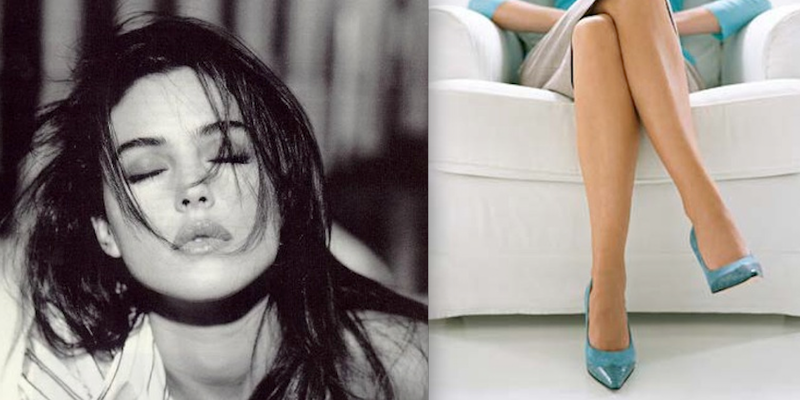
I had fallen behind (grossly so) in my social media follow-back connections, so the rainy afternoon full of cancelled appointments was the perfect time to catch up. What was intended as a quietly-fulfilling-cross-something-off-the-to-do-list activity became instead an exercise in frustration and annoyance.
I was taken aback by the provocative poses women used in their profile pictures—pouty smiles, lots of cleavage, a you've-got-to-be-kidding-me from behind thong shot. I write about leadership, women, power and influence, so my content isn't salacious in the slightest. Intrigued by what I'd seen, I did some research on the Geena Davis Institute on Gender in Media and site as well as others and found some troubling insights:
* From a 2010 article, “Eating Disorder Statistics" by Mary Nightengale: "When I see pictures of extremely thin models and actresses, it usually depresses me. I wasn't built like them, but it doesn't stop me from aspiring to their level of thinness. The need to be perceived as pretty and desirable became my main goal in life, not because I am vain, but because I learned how the world worked."
* University at Buffalo researchers studied the covers of Rolling Stone magazine from 1967 to 2009 to "measure changes in the sexualization of men and women in popular media over time." Their findings? “In the 2000s, there were 10 times more hypersexualized images of women than men, and 11 times more non-sexualized images of men than of women. What we conclude from this is that popular media outlets such as Rolling Stone are not depicting women as sexy musicians or actors; they are depicting women musicians and actors as ready and available for sex. This is problematic because it indicates a decisive narrowing of media representations of women."
* Research by Dr. Stacy Smith, Ph.D. at the USC Annenberg School for Communication & Journalism: "Females are almost four times as likely as males to be shown in sexy attire. Further, females are nearly twice as likely as males to be shown with a diminutive waistline. Generally unrealistic figures are more likely to be seen on females than males."
* "Media Influence on Youth," Crisis Connection: "Young girls are becoming aware of body weight and figure as early as eight years old now and eating disorders to have grown 400 percent since 1970."
* M.K. Gordon in the 2008 Psychology of Women Quarterly. "Exposure to sexually objectifying media has been related to greater importance of beauty and appearance in defining an individual’s own self-worth as well as in defining the value of females in general."
* Jeane Kilbourne in "Beauty and the Beast of Advertising:" "Women are conditioned to view their faces as masks and their bodies as objects."
My takeaway? That, as women, we have to step up and reclaim control, believing that we're much more than a pretty face or a delectable body part. Pretty faces get wrinkles. Delectable body parts sag, bag, and droop.
But our spirit, personality, wit, or quiet wisdom live on... immune from the ravages of wrinkles, age spots, or hairy chins. They're our light, our gift, our contribution to ourselves and to the world, and no amount of air-brushing is needed to prove their worth.
Image source: Model Maven & Blog Critics